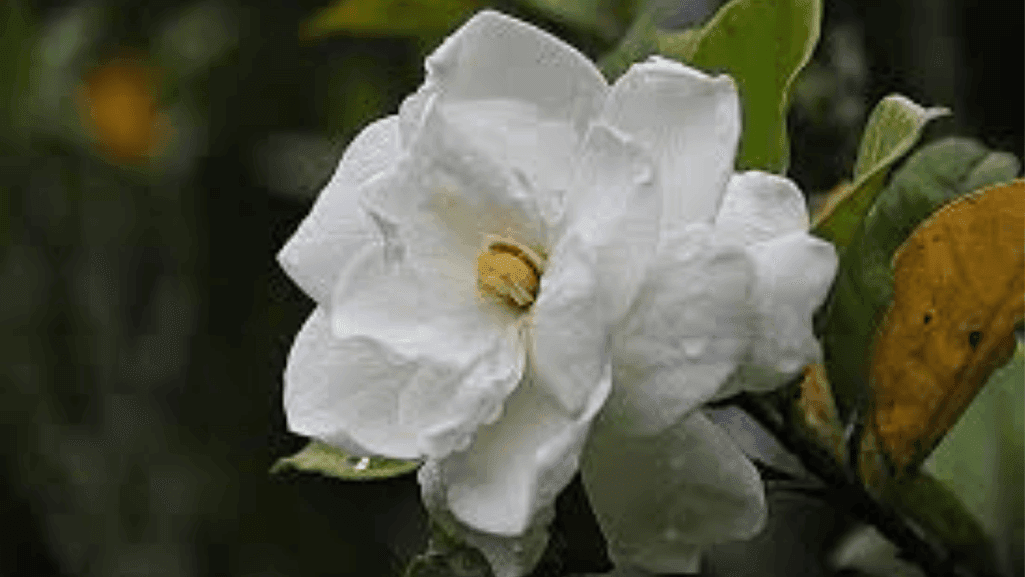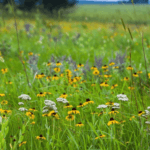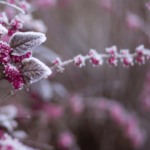
Beautiful flowers gardenia Plants For Your homes

Gardenia Care are celebrated for their intoxicating fragrance and elegant, glossy foliage — a combination that adds lasting beauty to any garden. With a few proven gardenia care tips, you can encourage fragrant white blooms and keep your plants healthy and vibrant from spring into fall.
Picture a border or container filled with evergreen foliage and creamy, white flowers that scent the air — that’s the reward of good gardenia care. A properly sited and watered gardenia will produce more blooms, stronger growth, and a long-lasting fragrant display.
 Understanding Gardenia Basic Requirements
Understanding Gardenia Basic RequirementsGardenias reward simple, consistent care: the right site, balanced watering, and slightly acidic soil. Below is a quick checklist and the core factors to help your gardenias thrive and produce fragrant blooms.
Gardenias perform best outdoors in USDA hardiness zones 8–11. Some cold-tolerant varieties can survive in zone 7 if planted in a protected spot or grown in pots you can move indoors. If you live in a cooler area, use containers, bring them inside for winter, or choose cultivars bred for resilience so your plants continue to thrive.
 Optimal Sunlight and Watering Schedules for Gardenias
Optimal Sunlight and Watering Schedules for GardeniasGardenias prefer bright spots with protection from brutal afternoon sun — an east-facing border or a spot that gets strong morning sun and light afternoon shade is ideal. In very hot climates, aim for filtered sun or partial shade so foliage doesn’t scorch. For watering, check the top two inches of soil; keep it evenly moist but avoid standing water. Adjust frequency by soil type: sandy soils need more frequent water than rich, well-draining mixes.
If you want detailed guidance on choosing a planting location and watering routines, jump to the Selecting the Right Soil and Proper Watering sections below for step‑by‑step care.
| AspectRequirement | |
| USDA Hardiness Zones | 8–11 (or container-grown in colder zones) |
| Sunlight | Morning sun, afternoon shade; about 4–6 hours daily |
| Watering | Consistent moisture; avoid waterlogging — adjust for soil/rainfall |
These core requirements — sun, water, and suitable zone — set the stage for healthy, blooming gardenias. Adjust each factor to your location and soil so your gardenia plants stay resilient and beautiful.
Gardenias perform best when planted in a soil that holds moisture yet drains well and stays slightly acidic. Below are practical, garden-ready soil recipes and easy steps to test and tweak your planting mix so your gardenias (in-ground or potted) get off to a strong start.
Aim for a rich, well-aerated mix that retains moisture without becoming waterlogged. Gardenias prefer slightly acidic soil — that helps iron and other micronutrients stay available so leaves stay green and plants flower reliably.
Sample soil mixes (by volume):
 Adjusting Soil pH and Composition
Adjusting Soil pH and CompositionGardenias do best in slightly acidic soil — generally a pH of about 5.0–6.5 keeps iron available and prevents chlorosis. If your pH is higher, gently acidify using elemental sulfur or iron sulfate following product directions. For small adjustments, incorporate acidic organic matter (pine needles, composted oak leaves) and re-test after a few weeks.
Getting your soil right — pH, drainage, and organic content — is one of the highest-impact steps you can take to grow healthy, blooming gardenias. If you haven’t tested your soil yet, test your soil now and follow the recipes above to create an ideal root environment.
| Soil AttributeRequirementAdjustment Method | ||
| pH Level | 5.0 – 6.5 (slightly acidic) | Elemental sulfur, iron sulfate, or acidic organic matter |
| Drainage | Well-drained soil | Add perlite, coarse sand, or build raised beds |
| Organic Content | High; keeps soil moist without compaction | Mix in compost or well-rotted manure |
Following these soil guidelines helps gardenias grow strong and boosts their flower production. It makes sure your gardenia soil requirements are met, keeping your gardenias healthy.
Getting watering right is one of the fastest ways to keep gardenias healthy and producing fragrant blooms. These plants need even, consistent moisture at the roots — not soggy soil — so your approach should vary by age, soil type, and whether the plant is in a pot or the ground.
Use a moisture-first mindset: check the top 1–2 inches of soil with your finger or a moisture meter before watering. Aim for moist soil, not saturated, and adjust frequency for sandy versus heavy soils. The table below gives practical starting points — then tune to your site and season.
| Plant TypeWatering Frequency (starting point)Notes | ||
| Newly planted gardenias | 2–3 times per week for first 6 weeks | Keep root ball moist to encourage establishment; avoid puddles. |
| Established gardenias | About once per week | Increase frequency in hot, dry weather; reduce in cool, wet periods. |
| During drought | Once per week (deep soak) | Mulch to conserve moisture; avoid letting plants wilt repeatedly. |
| Container / potted gardenias | Daily to every other day in warm months | Containers dry out fast — check the soil; avoid standing water in saucers. |
Best practices: water in the early morning to reduce evaporation and let leaves dry before evening. A soaker hose or drip system delivers water to the root zone while reducing wet foliage — this helps prevent leaf diseases. Always check soil moisture near the roots rather than relying on surface dryness alone.
A moisture meter is a small, inexpensive tool that removes guesswork — insert it to the root zone and water only when it reads dry. For heavy or poorly drained soils, reduce frequency and improve drainage with perlite or raised beds to avoid root rot.
 Fertilizing Gardenias for Peak Blooms
Fertilizing Gardenias for Peak BloomsGiving gardenias the right nutrients at the right time improves bloom quality and fragrance. Use an acid‑loving plant fertilizer (azalea/camellia formulas work well) that includes iron and magnesium to prevent yellowing leaves and support vigorous blooms.
A balanced approach: apply fertilizer monthly from spring through summer, then stop in fall to avoid tender new growth before cooler weather. For potted gardenias, follow label rates and consider a slow‑release formula to reduce leaching from frequent container watering.
| SeasonFertilizationNote | ||
| Spring to Summer | Monthly application | Encourages growth and abundant blooms |
| Fall to Winter | Avoid fertilizing | Prevents tender growth before cold periods |
Use an azalea/camellia fertilizer or an acid-formulated balanced feed (check label for micronutrients like iron and magnesium). Organic options such as composted manure or a seaweed extract can supplement, especially for potted gardenias. If leaves yellow despite fertilizing, test soil pH first — iron deficiency from high pH is a common culprit.
When in doubt, adjust watering and soil first — many gardenia problems trace back to moisture extremes or improper pH. If persistent issues like yellow leaves or poor blooms continue after correcting those, consider consulting a local extension service or a nursery experienced with gardenias for tailored advice.
 Gardenia Care
Gardenia CareThere are many gardenia varieties — both wild species and cultivated gardenia variety selections — prized for their intoxicating scent and glossy, evergreen foliage. Popular gardenias you’ll see in landscapes include ‘Belmont’ (large creamy blooms in late spring), the cold-tolerant ‘Frost Proof’ (good for marginal zones), and reblooming types like ‘Celestial Star’ that offer white blooms from late spring into fall. Choose a variety that matches your climate and space for the best results.
When you plant gardenias, timing and placement matter: plant in spring after the last frost or in early fall so roots can establish. In USDA zones 8–11 gardenias thrive outdoors; in cooler areas plant in containers you can move or pick varieties labeled as frost-resistant. Always give them well-drained, slightly acidic soil and a spot with morning sun and afternoon shade for reliable blooms and healthy growth.
| VarietyHeightBlooming SeasonSpecial Features | |||
| Belmont | 5–6 feet | Late spring – early summer | Large, showy creamy flowers |
| Frost Proof | 4–5 feet | Spring | Cold-hardy selection for cooler climates |
| Celestial Star | 3–4 feet | Late spring – mid-summer; often reblooms in fall | Compact, reblooming habit |
Want to add gardenias to a patio or small yard? Choose compact, reblooming gardenia varieties or grow potted gardenias that bring fragrant white blooms close to seating areas. For colder regions, select frost-tolerant varieties or grow gardenias in pots to move indoors during winter — both approaches extend the seasons you can enjoy their scent and beauty.
Pruning at the right time keeps gardenias tidy and encourages next season’s flower buds. Follow the simple timing and technique tips below for the best results.
Lightly prune gardenias immediately after they finish flowering in early summer — this preserves developing buds for the next year. Remove overcrowded or crossing branches and cut back to maintain shape. You can remove small amounts of green growth as needed; avoid heavy pruning late in the season when new shoots might be damaged by cold.
Keep pruning tools clean to prevent disease spread — wipe shears with a 1:1 mix of rubbing alcohol and water before and after pruning. Regular deadheading of spent blooms (about once a week during peak season) extends the flowering period by encouraging more buds instead of seed development.
| Pruning ActivityBenefitsRecommended Frequency | ||
| General pruning | Controls size, improves airflow | Every other year (light shaping annually) |
| Deadheading | Encourages reblooming and tidiness | Weekly during active bloom |
| Disinfecting tools | Prevents disease spread | Before each session |
Pruning and deadheading keep gardenias compact and blooming — pair these practices with proper soil, watering, and fertilizer for the best fragrant white blooms and long-term plant health.
 Battling Common Gardenia Diseases and Pests
Battling Common Gardenia Diseases and PestsHealthy gardenias start with sound cultural care — good soil, proper watering and airflow — but pests and diseases still happen. Below are the common problems, quick “if you see this” actions, and sustainable treatment options to keep your gardenias looking healthy and vibrant.
Root rot from Phytophthora is often tied to poor drainage and overwatering. If you notice wilting and discolored roots, improve drainage immediately, reduce watering, and consider replanting into a raised bed or amended soil. Powdery mildew shows as a white, powdery coating on young leaves in humid, late-summer conditions — remove affected foliage and improve airflow; organic sprays like neem oil or fixed copper can help. For stem cankers (Phomopsis), prune out infected stems with clean tools and avoid wounding the plant. Sooty mold is secondary to sap-sucking pests (aphids, mealybugs); control those insects (biocontrols or insecticidal soap) and wash leaves to restore photosynthesis.
When choosing treatments, prioritize cultural controls first (fix soil, adjust water, prune for airflow). If you need fungicides or insecticides, check labels for gardenia use and local regulations — some products (e.g., myclobutanil) are effective but restricted in some areas; organic alternatives like neem oil and horticultural oils are safer for pollinators and beneficials.
| IssueSignsAction | ||
| Root rot (Phytophthora) | Wilting, brown roots, decline | Improve drainage, reduce water, remove badly infected plants; consider fungicide in severe cases |
| Powdery mildew | White dusty coating on leaves | Remove infected growth, improve airflow, apply neem oil or approved fungicide if needed |
| Sooty mold (from pests) | Black sticky coating on leaves | Treat sap-suckers (insecticidal soap, neem oil, or predators like ladybugs) and wash leaves |
The best defense is good culture: plant gardenias in well-drained soil, water properly, keep humidity balanced, and prune for airflow. Encourage beneficial insects and use targeted, least-toxic controls first (soap, neem, ladybugs). Regularly inspect plants so you can detect and treat issues before they damage overall plant health.
If an issue persists after cultural fixes, contact a local extension office or a nursery with experience in gardenias — they can recommend region-specific treatments and verify whether a chemical control is appropriate and legal in your area.
Gardenias set the best buds and produce the most fragrant white blooms when humidity and temperature are in the right range. Below is a simple “bloom conditions” checklist and practical tips for indoor and outdoor situations so your gardenias (in the ground or potted gardenias) perform their best.
If buds drop: check for sudden temperature swings, underwatering, or very low humidity. Move potted gardenias to a more stable nighttime location, increase humidity, and avoid overhead fertilizer or foliar sprays when buds are forming. For outdoor plants, use frost cloth on cold nights and ensure roots are well mulched.
Stem cuttings (4–6 inches) are the fastest way to multiply gardenias. Trim just below a leaf node, remove lower leaves, dip the cut end in rooting hormone, and place in a moist, well-draining mix. Keep high humidity (a plastic dome or tray of water) and bright, indirect light. Roots usually form in a few weeks — transplant when roots feel firm. Air layering is another reliable method for difficult-to-root varieties and works well for larger branches.
For best rooting, use terracotta pots for good aeration, keep the medium evenly moist (but not waterlogged), and hold off on fertilizing until the roots are established. Once transplanted, protect young plants from full sun until they acclimate.
Want a printable step‑by‑step guide or a propagation video? Check the propagation resources linked in the article to follow an illustrated sequence and improve success with your gardenia propagation projects.
Gardenias reward attentive care with intoxicating fragrance and elegant white flowers. Focus on three fundamentals — the right soil (slightly acidic and well-drained), consistent watering that keeps the root zone moist (not soggy), and proper light (morning sun, afternoon shade) — and pair those with monthly feeding in the growing season. Follow the troubleshooting and pruning tips in this guide and your gardenias will stay healthy, vibrant, and blooming for years.
Gardenias thrive in USDA zones 8–11 but can be grown in pots in cooler areas — move potted gardenias indoors for winter or select cold‑tolerant varieties. Small adjustments in humidity, temperature, soil pH, and watering habits make the biggest difference in producing fragrant white blooms and maintaining evergreen foliage.
Gardenias need slightly acidic, well-drained soil, regular watering to keep the root zone moist (not soggy), morning sun with afternoon shade in hot climates, and monthly feeding during the growing season. Maintaining humidity and cool nights helps buds set.
Check the USDA Plant Hardiness Zone Map for your area. Outdoor gardenias do best in zones 8–11; in cooler zones use containers or choose cold‑tolerant cultivars.
Water when the top 1–2 inches of soil feel dry. Established gardenias often need a deep soak about once per week (more often for potted gardenias in hot weather); newly planted plants require more frequent moisture until established.
Use rich, slightly acidic soil (pH about 5.0–6.5) that drains well and contains high organic content. Amend heavy soils with perlite or sand and compost to create an ideal root environment.
Lower pH gradually with elemental sulfur or iron sulfate according to package directions; adding acidic organic matter (pine bark, composted leaves) also helps and is gentler for potted plants.




